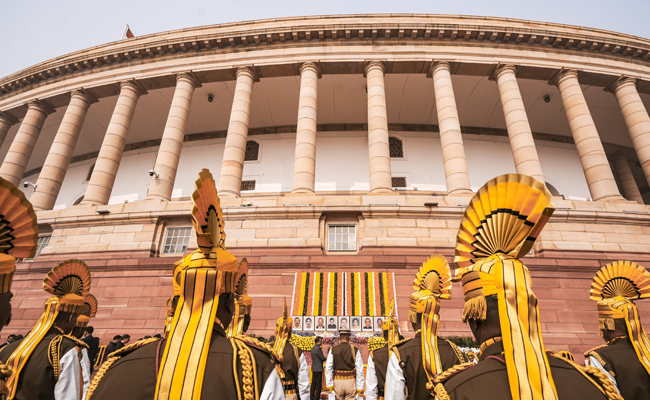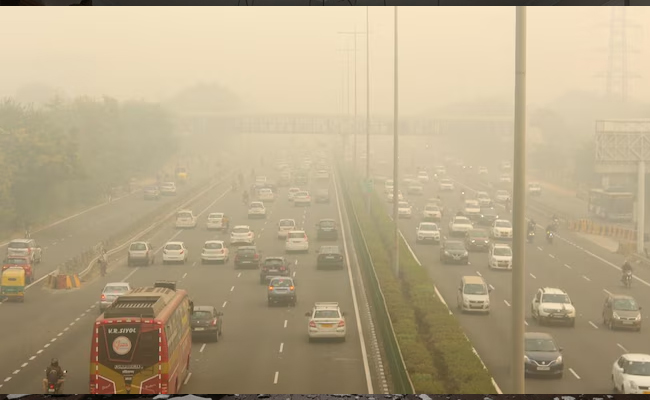Bengaluru, April 20: Karnataka Chief Minister Siddaramaiah on Friday filed his nomination to contest the ensuing state Legislative Assembly elections from Chamundeshwari constituency in Mysuru, an official said.
"Siddaramaiah, along with his son Yathindra, visited the Chamundeshwari temple atop Chamundi Hills in Mysuru to pray to goddess Durga before filing his nomination," an official from the Chief Minister's Office told here.
The 69-year-old veteran leader contested from Chamundeshwari seat seven times since 1983 and won five times. He later shifted his constituency to Varuna in Mysuru district, from where he was elected twice since 2008, including the last assembly polls in 2013.
Siddaramaiah has paved way for his son, Yathindra, to contest the May 12 assembly elections from his home constituency Varuna. Yathindra, who will be contesting the state elections for the first time, also filed his nomination papers on Friday.
Siddaramaiah switched over to the Congress from the Janata Dal-Secular (JD-S) in August 2006 following differences with its supremo and former Prime Minister H.D. Deve Gowda and his second son and former Chief Minister H.D. Kumaraswamy.
He is also only second lawmaker in the southern state to complete the five-year term as Chief Minister in 40 years after Devaraj Urs did from 1972-78, as about 10 chief ministers could not compete their full term in between for various reasons.
Meanwhile, JD-S state president Kumaraswamy filed his nomination for the state polls from both Channapatna and Ramanagara assembly segments in Ramanagara district, about 50km southwest from here.
Let the Truth be known. If you read VB and like VB, please be a VB Supporter and Help us deliver the Truth to one and all.
New Delh (PTI) The Congress on Saturday said it is perhaps not very surprising that India is not part of a US-led strategic initiative to build a secure silicon supply chain, given the "sharp downturn" in the Trump-Modi ties, and asserted that it would have been to "our advantage if we had been part of this group".
Congress general secretary in charge of communications Jairam Ramesh took a swipe at Prime Minister Narendra Modi, saying the news of India not being part of the group comes after the PM had enthusiastically posted on social media about a telephone call with his "once-upon-a-time good friend and a recipient of many hugs in Ahmedabad, Houston, and Washington DC".
In a lengthy post on X, Ramesh said, "According to some news reports, the US has excluded India from a nine-nation initiative it has launched to reduce Chinese control on high-tech supply chains. The agreement is called Pax Silica, clearly as a counter to Pax Sinica. The nations included (for the moment at least) are the US, Japan, the Republic of Korea, Singapore, the Netherlands, the United Kingdom, Israel, the United Arab Emirates, and Australia."
"Given the sharp downturn in the Trump-Modi ties since May 10th, 2025, it is perhaps not very surprising that India has not been included. Undoubtedly, it would have been to our advantage if we had been part of this group."
"This news comes a day after the PM had enthusiastically posted on his telephone call with his once-upon-a-time good friend and a recipient of many hugs in Ahmedabad, Houston, and Washington DC," the Congress leader asserted.
The new US-led strategic initiative, rooted in deep cooperation with trusted allies, has been launched to build a secure and innovation-driven silicon supply chain.
According to the US State Department, the initiative called 'Pax Silica' aims to reduce coercive dependencies, protect the materials and capabilities foundational to artificial intelligence (AI), and ensure aligned nations can develop and deploy transformative technologies at scale.
The initiative includes Japan, South Korea, Singapore, the Netherlands, the United Kingdom, Israel, the United Arab Emirates, and Australia. With the exception of India, all other QUAD countries -- Japan, Australia and the US -- are part of the new initiative.
New Delhi will host the India-AI Impact Summit 2026 on February 19-20, focusing on the principles of 'People, Planet, and Progress'. The summit, announced by Prime Minister Narendra Modi at the France AI Action Summit, will be the first-ever global AI summit hosted in the Global South.
Prime Minister Modi and US President Trump on Thursday discussed ways to sustain momentum in the bilateral economic partnership in a phone conversation amid signs of the two sides inching closer to firming up a much-awaited trade deal.
The phone call between the two leaders came on a day Indian and American negotiators concluded two-day talks on the proposed bilateral trade agreement that is expected to provide relief to India from the Trump administration's whopping 50 per cent tariffs on Indian goods.
In a social media post, Modi had described the conversation as "warm and engaging".
"We reviewed the progress in our bilateral relations and discussed regional and international developments. India and the US will continue to work together for global peace, stability and prosperity," Modi had said without making any reference to trade ties.




